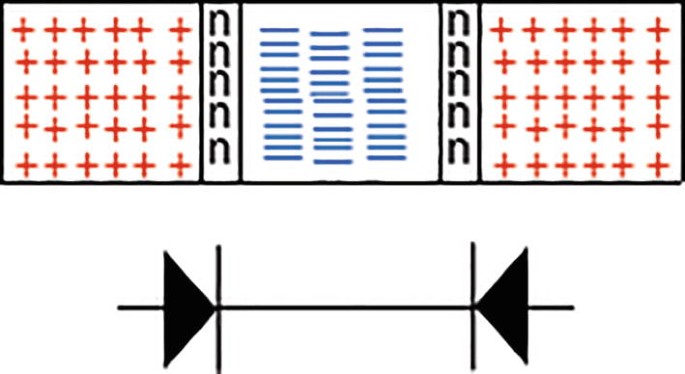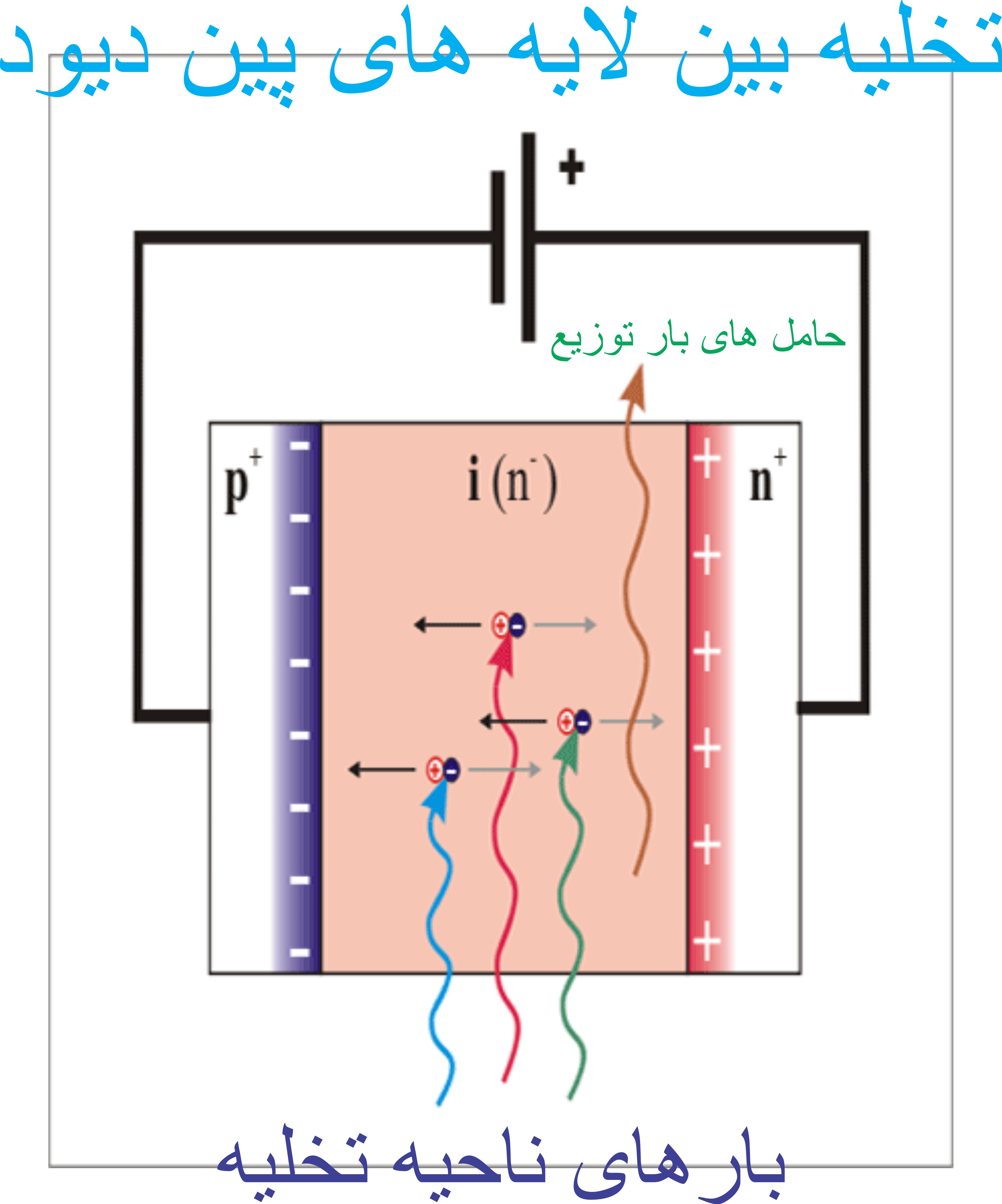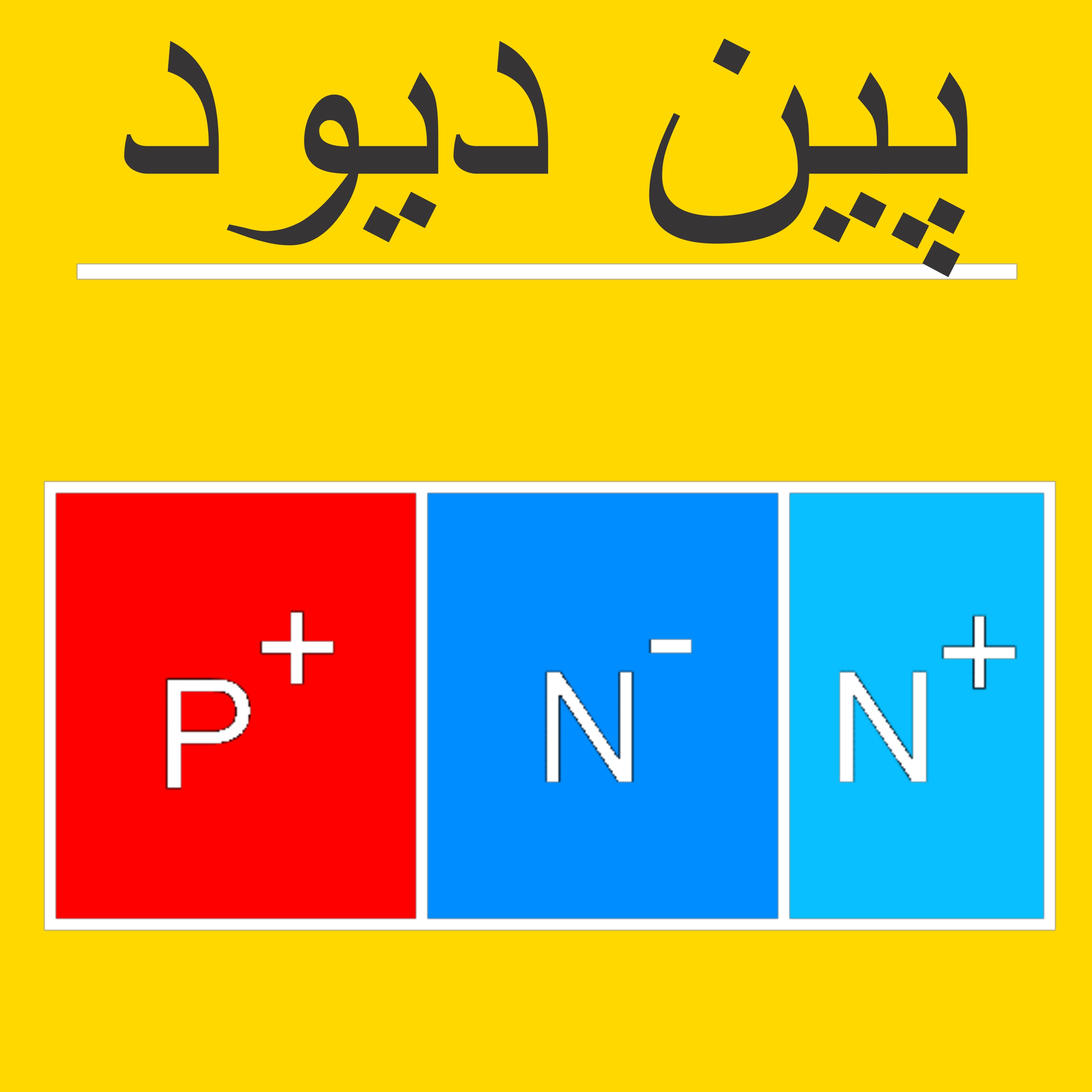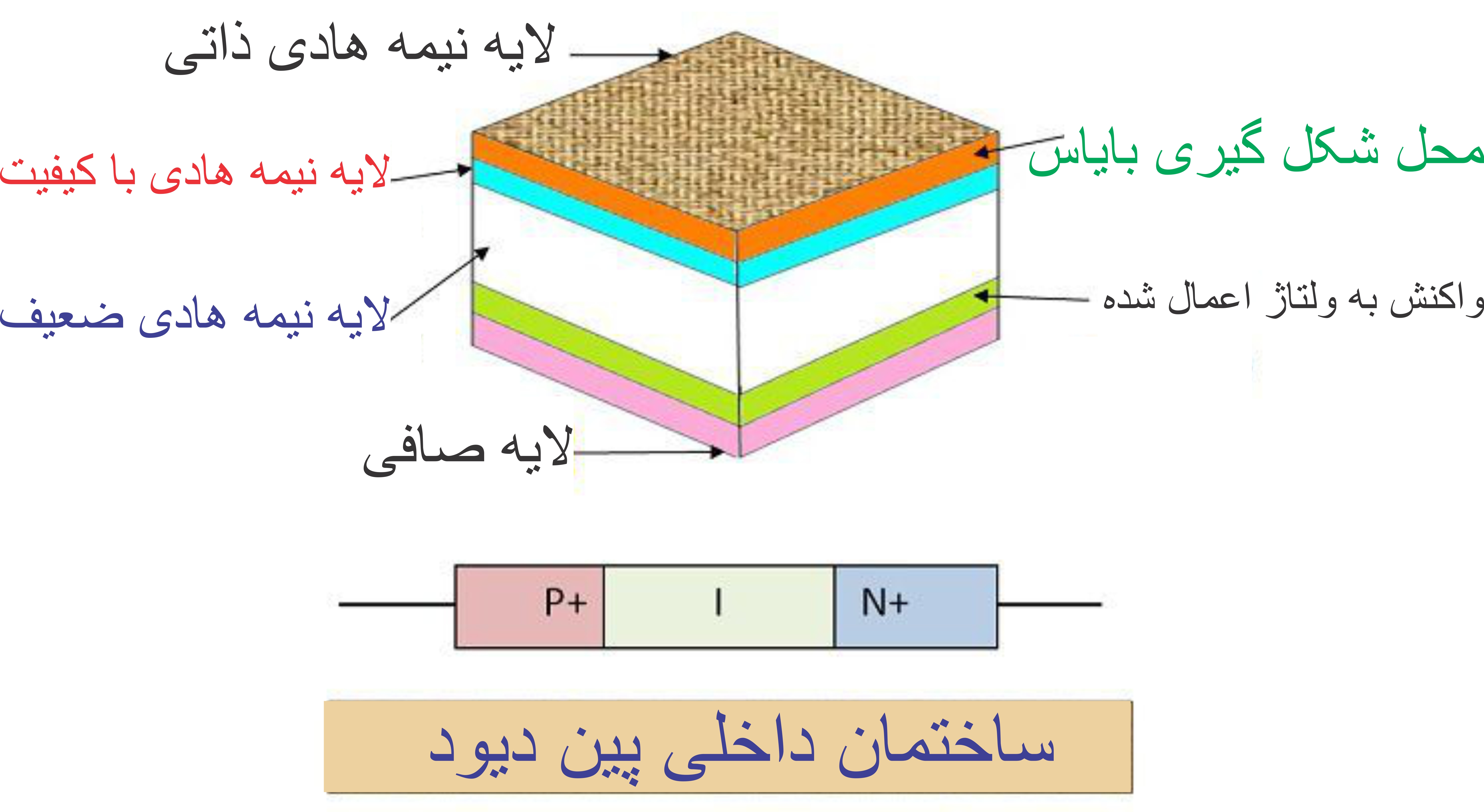_ بخش پین دیود (pin diode)
بررسی (ناحیه تخلیه ولتاژ) در پین دیود (pin diode)
پژوهشگر و نویسنده: دکتر ( افشین رشید)
وقتی ولتاژ معکوس به دیود اعمال می شود، عرض ناحیه تخلیه افزایش می یابد. ضخامت این ناحیه تا زمانی که کل حامل بار متحرک ناحیه I از آن دور شود، افزایش می یابد. ولتاژ معکوس مورد نیاز برای حذف کامل حامل بار از ناحیه I به عنوان ولتاژ جاروب شده شناخته می شود.فرض کنید لایه N و I ناحیه تخلیه را تشکیل می دهند. انتشار حفره و الکترون در سراسر ناحیه، لایه تخلیه را در سراسر ناحیه NI ایجاد می کند. لایه تخلیه نازک، ناحیه n را القا می کند و ناحیه تخلیه ضخیم با قطبیت مخالف، ناحیه I را القا می کند.
وقتی دیود در بایاس مستقیم نگه داشته می شود، بارها به طور مداوم از ناحیه P و N به ناحیه I تزریق می شوند. این امر مقاومت مستقیم دیود را کاهش می دهد و مانند یک مقاومت متغیر رفتار می کند.حامل های باری که از ناحیه P و N وارد ناحیه i می شوند، بلافاصله در ناحیه ذاتی ترکیب نمی شوند. مقدار محدود بار ذخیره شده در ناحیه ذاتی، مقاومت ویژه آنها را کاهش می دهد.

_ife5.gif)
میدان الکتریکی بالا جفت های الکترون - حفره بزرگی ایجاد می کند که به موجب آن دیود حتی برای سیگنال های کوچک نیز پردازش می شود. دیود PIN نوعی آشکارساز نوری است که برای تبدیل انرژی نور به انرژی الکتریکی استفاده می شود.لایه ذاتی بین نواحی نوع P و N فاصله بین آنها را افزایش می دهد. عرض این ناحیه با ظرفیت خازنی آنها نسبت معکوس دارد. اگر فاصله بین نواحی P و N افزایش یابد، ظرفیت خازنی آنها کاهش می یابد. این ویژگی دیود، زمان پاسخ آنها را افزایش می دهد و دیود را برای کارهایی مانند کاربردهای مایکروویو مناسب می سازد.
- پژوهشگر و نویسنده: دکتر ( افشین رشید)
دکترایِ تخصصی نانو _ میکرو الکترونیک





